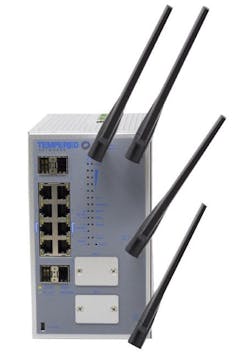Three years ago, we first covered Tempered Networks and its approach to industrial control system cybersecurity via the creation of virtualized, private overlay networks to protect existing networks. This approach allows companies to secure their current networks without having to first remove and replace them. This virtualization approach—which the company calls Identity-Defined Networking (IDN)—was a fairly radical approach a few years ago. But with industry getting more familiar with the concept via the digital twin, virtualization is becoming better understood and more accepted as a viable technology for industry.
As Tempered Networks gains a stronger foothold across industry, with deployments such as one we recently profiled with National Instruments and Innovari, the company has announced a new cybersecurity hardware product—the HIPswitch 250.
Erik Giesa, vice president of products at Tempered Networks, said the new gateway leverages Tempered Networks’ IDN approach to industrial cybersecurity and cuts the cost and complexity of networking and security in half by eliminating the need for access point names (APNs), Ethernet switches, internal firewalls, virtual private networks (VPNs) and separate cellular modems. “For the first time in the industry, IoT endpoints can be instantly provisioned in an overlay network regardless of location, without having to modify the legacy network,” Giesa said. He added that, using the HIPSwitch 250, operations teams can “rapidly configure, deploy and activate industrial networks in as little as 15 minutes.”
Beyond fast deployment, Tempered Networks notes the new gateway provides millisecond link failover and reduces the attack surface of existing networks by 90 percent.
Features of the HIPswitch 250 include:
- Fast Ethernet and dual cell modems to provide the flexibility to swap carriers on demand, and set and change link priority;
- Smart Link Manager to enable customized network and application-level link monitoring, coupled with fast failover and the ability to prioritize links across multiple cellular and wired links;
- Port Density with Power over Ethernet, which reportedly eliminates the need for edge Ethernet switches and provides additional power for customers to deploy anywhere with 8x1 Gbps, 4xSFP fiber or copper;
- Serial over IP ports to unify, connect and protect legacy and modern IoT systems; and
- Secure communications and endpoints using machine-driven authentication, authorization and accounting (AAA), automatic encryption, cloaking and wide-area micro-segmentation.
This video from Tempered Networks explains IDN:
Leaders relevant to this article:


